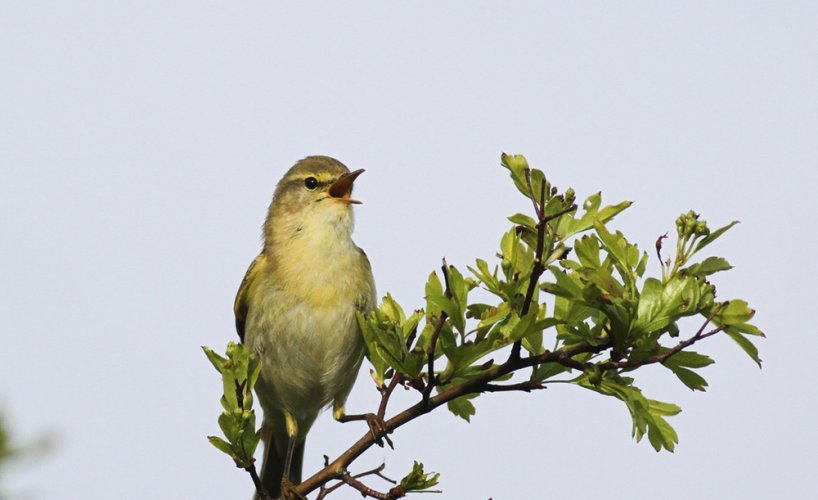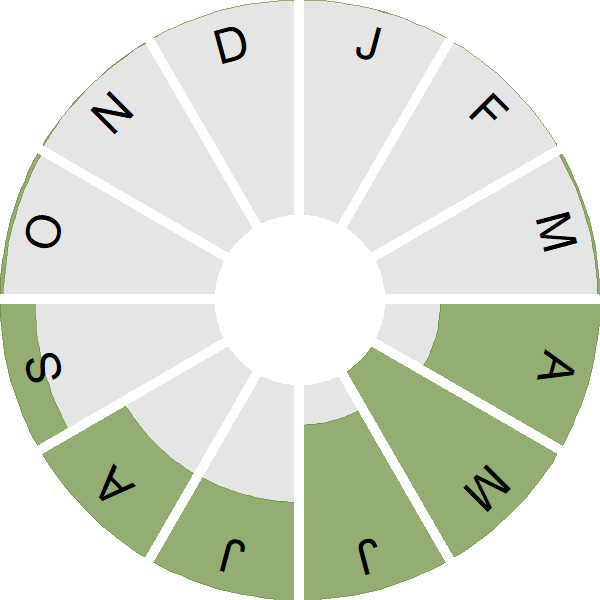Willow Warbler
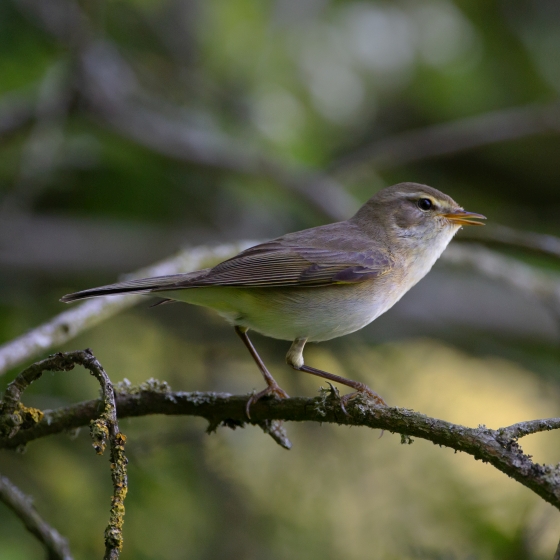
Introduction
A member of the leaf warbler family, the beautiful olive and yellow Willow Warbler is also one of our most widespread.
A summer visitor to the Britain & Ireland, the Willow Warbler's cascading, liquid song can be heard from mid-April and is arguably one of the most beautiful sounds of the spring. Willow Warblers can be found breeding across Britain & Ireland.
The Willow Warbler population has experienced mixed fortunes in the UK, where it is Amber-listed. It is declining across England and Wales but increasing in Scotland and Northern Ireland. It is thought that the northern populations winter in a slightly different area from the southern birds and that this difference might contribute to the overall UK trend.
- Our Trends Explorer gives you the latest insight into how this species' population is changing.

Key Stats
Identification
ID Videos
This section features BTO training videos headlining this species, or featuring it as a potential confusion species.
Warbler Identification Workshop Part 1: Willow Warbler & Chiffchaff
Songs and Calls
Song:
Call:
Status and Trends
Conservation Status
Population Change
Willow Warbler abundance has shown regionally different trends within the UK (Morrison et al. 2010, 2013a, 2015, 2016c, Massimino et al. 2013, Balmer et al. 2013). The overall CBC/BBS trend shows a rapid decline during the 1980s and early 1990s, after 20 years of relative stability, and, on the strength of a 31% decline on CBC plots between 1974 and 1999, the species was moved from the green to the amber list. This decline occurred mainly in southern Britain, however, accompanied by a fall in survival rates there (Peach et al. 1995a), with Scottish populations remaining unaffected. The differing regional trends have been linked to differences in productivity (Morrison et al. 2016c). BBS figures indicate a contrast between an upward trend in Scotland and in Northern Ireland since 1995, and continued severe decreases in England, with no overall trend in Wales. The BBS map of change in relative density between 1994-96 and 2007-09 indicates that strong decrease was widespread across England and Wales over that period, with little change across Northern Ireland, northern England and most of Scotland and increases in the far northwest. However, the most recent 5-year BBS trends suggest that declines are now occurring in Northern Ireland and that the previously increasing trend in Scotland may now have levelled off.
There has been a decline across Europe since 1980 (PECBMS: PECBMS 2020a>; see also Lehikoinen et al. 2014).
Distribution
Willow Warbler are widespread with gaps restricted to a few 10-km squares around the Fens in eastern England and to the Outer Hebrides and Northern Isles. Densities are low in much of southern, central and eastern England, and at higher altitudes in the Scottish Highlands. They are greatest in the northern half of Ireland, Wales, much of northern England and southern Scotland, together with the foothills and glens of the Scottish Highlands.
Occupied 10-km squares in UK
or view it on Bird Atlas Mapstore.
or view it on Bird Atlas Mapstore.
European Distribution Map
Distribution Change
Although there has been a small range expansion, the most striking change is the polarised pattern of relative abundance change, with Willow Warblers apparently increasing in Scotland and Wales but declining across much of England.
Change in occupied 10-km squares in the UK
or view it on Bird Atlas Mapstore.
or view it on Bird Atlas Mapstore.
Seasonality
Willow Warbler is a summer migrant, arriving from April with an early return passage during August and September.
Weekly pattern of occurrence
The graph shows when the species is present in the UK, with taller bars indicating a higher likelihood of encountering the species in appropriate regions and habitats.

Habitats
Breeding season habitats
Relative frequency by habitat
The graph shows the habitats occupied in the breeding season, with the most utilised habitats shown at the top. Bars of similar size indicate the species is equally likely to be recorded in those habitats.
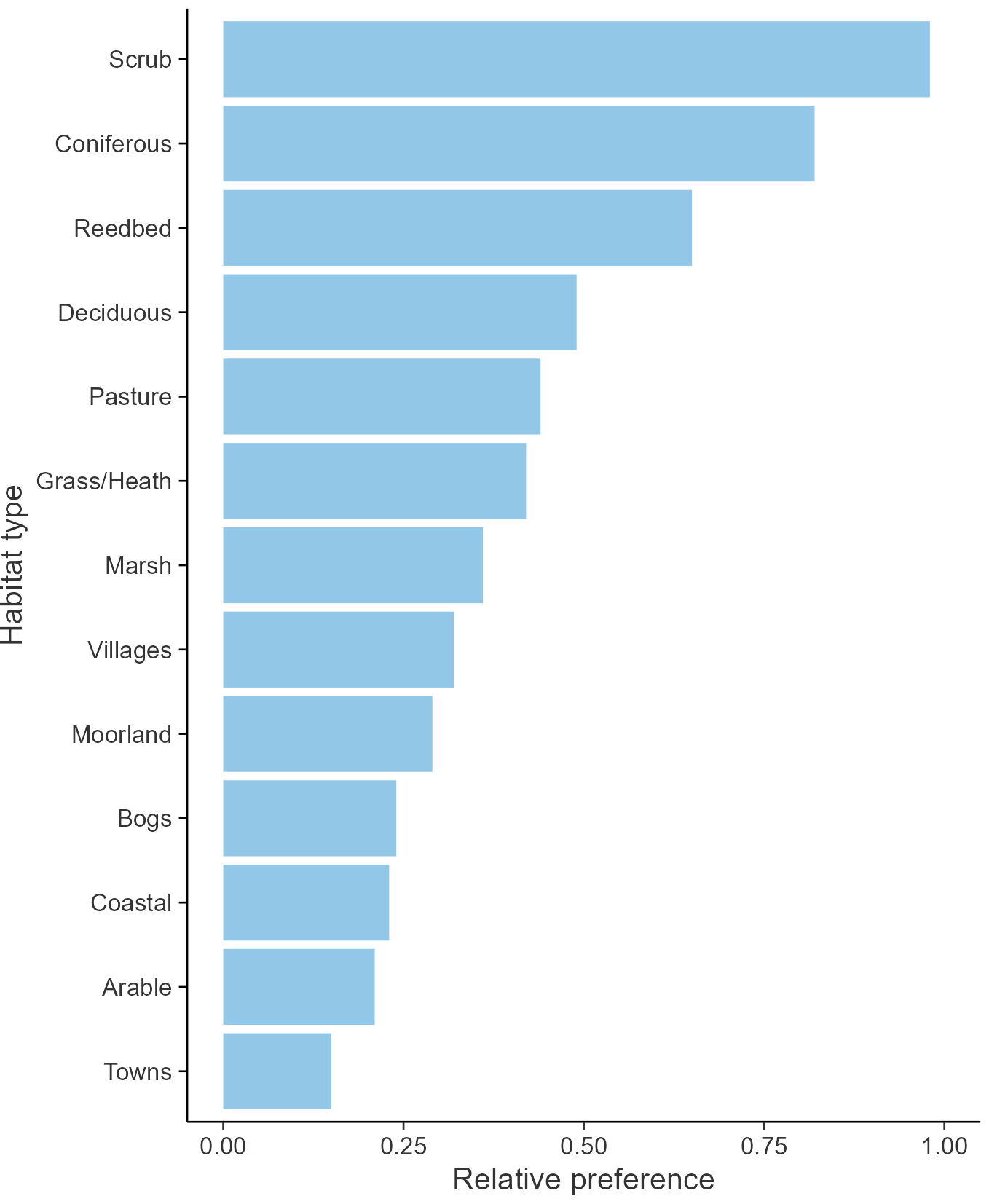
Movement
Britain & Ireland movement
Foreign locations of birds ringed or recovered in Britain & Ireland
Dots show the foreign destinations of birds ringed in Britain & Ireland, and the origins of birds ringed overseas that were subsequently recaptured, resighted or found dead in Britain & Ireland. Dot colours indicate the time of year that the species was present at the location.
- Winter (Nov-Feb)
- Spring (Mar-Apr)
- Summer (May-Jul)
- Autumn (Aug-Oct)

European movements
EuroBirdPortal uses birdwatcher's records, such as those logged in BirdTrack to map the flows of birds as they arrive and depart Europe. See maps for this species here.
The Eurasian-African Migration Atlas shows movements of individual birds ringed or recovered in Europe. See maps for this species here.
Biology
Productivity and Nesting
Nesting timing
Egg measurements
Clutch Size
Incubation
Fledging
Survival and Longevity
Survival is shown as the proportion of birds surviving from one year to the next and is derived from bird ringing data. It can also be used to estimate how long birds typically live.
View number ringed each year in the Online Ringing Report.
lifespan
Survival of adults
Survival of juveniles
Biometrics
Wing length and body weights are from live birds (source).
Wing length
Body weight
Ring Size
Classification, names and codes
Classification and Codes
- Order: Passeriformes
- Family: Phylloscopidae
- Scientific name: Phylloscopus trochilus
- Authority: Linnaeus, 1758
- BTO 2-letter code: WW
- BTO 5-letter code: WILWA
- Euring code number: 13120
Alternate species names
- Catalan: mosquiter de passa
- Czech: budnícek vetší
- Danish: Løvsanger
- Dutch: Fitis
- Estonian: salu-lehelind
- Finnish: pajulintu
- French: Pouillot fitis
- Gaelic: Ceileiriche-giuthais
- German: Fitis
- Hungarian: fitiszfüzike
- Icelandic: Laufsöngvari
- Irish: Ceolaire Sailí
- Italian: Luì grosso
- Latvian: vititis
- Lithuanian: ankstyvoji pecialinda
- Norwegian: Løvsanger
- Polish: piecuszek
- Portuguese: felosa-musical
- Slovak: kolibiarik spevavý
- Slovenian: severni kovacek
- Spanish: Mosquitero musical
- Swedish: lövsångare
- Welsh: Telor Helyg
- English folkname(s): Willow Wren
Research
Causes of Change and Solutions
Causes of change
The causes of decline are uncertain. Decreased breeding success is likely to be an important driver of the decline in the south-east, and the differing trends across the UK suggest that climate change (or possibly habitat changes occurring over wide areas) could be a factor behind the changes. However, problems on migration or in winter have not been completely ruled out.
Further information on causes of change
Willow warbler is among a suite of species that winter in the humid zone of West Africa and correspondingly are showing the strongest population declines among our migrant species (Ockendon et al. 2012, 2014). Pressures on migration and in the winter are likely to be affecting the population, as is a reduction in habitat quality on the breeding grounds (Fuller et al. 2005). A study based on BBS results from 1995 to 2006 found a negative correlation between the abundance of deer and Willow Warbler, with the species declining the most where deer population increase had been greatest, although the size of the impact was relatively small with modelling suggesting that deer could have caused a decline of around 4% over this period (Newson et al. 2012).
The decline in the south in the early 1990s has previously been linked to reduced adult survival (Peach et al. 1995a). However, more recent analysis of annual population changes and winter survival estimates across western Europe shows only a weak relationship between survival and population change, suggesting than long-term population change may be mostly driven by reduced productivity or juvenile survival ( Johnston et al. 2016). This is supported by CES results: the recent population decline is associated with a decline in productivity as measured by CES and with a substantial increase in nest failure rates. There is also a small but significant decrease in the number of fledglings per breeding attempt. Average laying dates have shifted earlier by a week, perhaps in response to recent climatic warming (Crick & Sparks 1999). In the southeast, the seasonal decline in productivity has strengthened and, despite the advance in timing of breeding, overall productivity has declined, whereas overall productivity has been stable in the northwest (Morrison et al. 2015). Although annual productivity rates and survival are variable across the UK, regional integrated population models showed that high annual productivity during 1994-2012 sometimes coincided with high survival in the north-west of Britain, leading to population growth, but high productivity is rarer in the south-east and never coincided with high survival (Morrison et al. 2016c).
There is also evidence that sex ratios vary across Britain and have become male-biased in many areas of low abundance such as south-east England, which may affect local productivity (Morrison et al. 2016b).
Information about conservation actions
The decline of this species in the UK has been driven by rapid declines in the south and east of England which contrasts with increases in Scotland and Northern Ireland. Conservation actions to reverse the declines therefore need to focus on identifying and addressing the problems in the south-east whilst maintaining conditions further north and west.
If these problems are caused by issues occurring during the breeding season rather than at other times, they could be linked to climate change or possibly to widespread habitat changes; therefore conservation actions in the south-east should focus on creating and maintaining good quality breeding habitat for Willow Warblers in order to help mitigate some of the effects of climate change (Mallord et al. 2016c).
Restoring or creating forests can help provide such habitat. Research suggests that Willow Warblers prefer woods with mean vegetation heights (3.7-5.3 m) and that these need to be relatively large (>0.5 ha) (Bellamy et al. 2009). The same study found that woodland that was 6-11 m high appeared less suitable and therefore rotational woodland management techniques which ensure that early successional patches continue to be available are most likely to retain Willow Warblers. Control of deer abundance within managed woodlands could possibly also benefit Willow Warblers (Newson et al. 2012; see Causes of Change section, above).
In addition to the woodland management activities described (and policies to encourage such activities), decisions about infrastructure projects can potentially have effects on Willow Warblers which extend some distance beyond the boundary of the project itself. A Dutch study found lower densities breeding in areas with apparently suitable habitat within 200 m of highways, and breeding productivity was also lower in those areas, which were occupied later in the season (Reijnen & Foppen 1994).
Publications (6)
Birds of Conservation Concern Wales 4: the population status of birds in Wales
Author: Johnstone, I.G., Hughes, J., Balmer, D.E., Brenchley, A., Facey, R.J., Lindley, P.J., Noble, D.G. & Taylor, R.C.
Published: 2022
The latest review of the conservation status of birds in Wales. The report assessed all 220 bird species which regularly occur in Wales. There are now 60 species of bird on the Red List, with 91 on the Amber List and just 69 - less than a third of the total number of species - on the Green List.
06.12.22
Reports Birds of Conservation Concern

Differential changes in life cycle-event phenology provide a window into regional population declines
Author: Hanmer, H.J., Boersch-Supan, P.H. & Robinson, R.A.
Published: 2022
New research from BTO investigates the effects of climate change on Willow Warblers. The findings, based on volunteers’ ringing and nest recording data, help to explain why birds breeding in different parts of Britain are being affected in different ways.
24.08.22
Papers
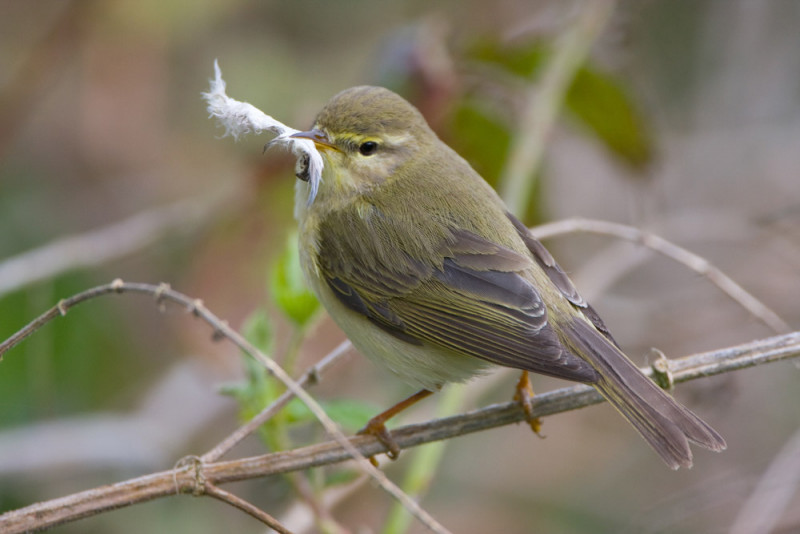
Breeding ground temperature rises, more than habitat change, are associated with spatially variable population trends in two species of migratory bird
Author: Martay, B., Pearce-Higgings, J.W., Harris, S.J. & Gillings, S.
Published: 2022
BTO research has examined the effects of climate change and habitat loss on the population trends of Willow Warbler and Chiffchaff. These closely related songbirds, tricky to distinguish by eye, share breeding grounds across the UK but migrate to different wintering grounds. While Chiffchaffs mainly migrate to south-west Europe and north-west Africa, with a small number remaining in the UK, Willow Warblers head across the Sahara to the humid zone in central Africa.
03.07.22
Papers

Demographic drivers of decline and recovery in an Afro-Palaearctic migratory bird population
Author: Morrison, C.A., Robinson, R.A., Butler, S.J., Clark, J.A. & Gill, J.A.
Published: 2016
Populations of many species of migratory bird are declining in Britain. However, the picture is not equally gloomy across the country. Many species are doing much better in northern Britain than they are in the south. Recent research, led by Cat Morrison at the University of East Anglia in collaboration with BTO staff, has used BTO data to understand why this difference occurs.
11.11.16
Papers
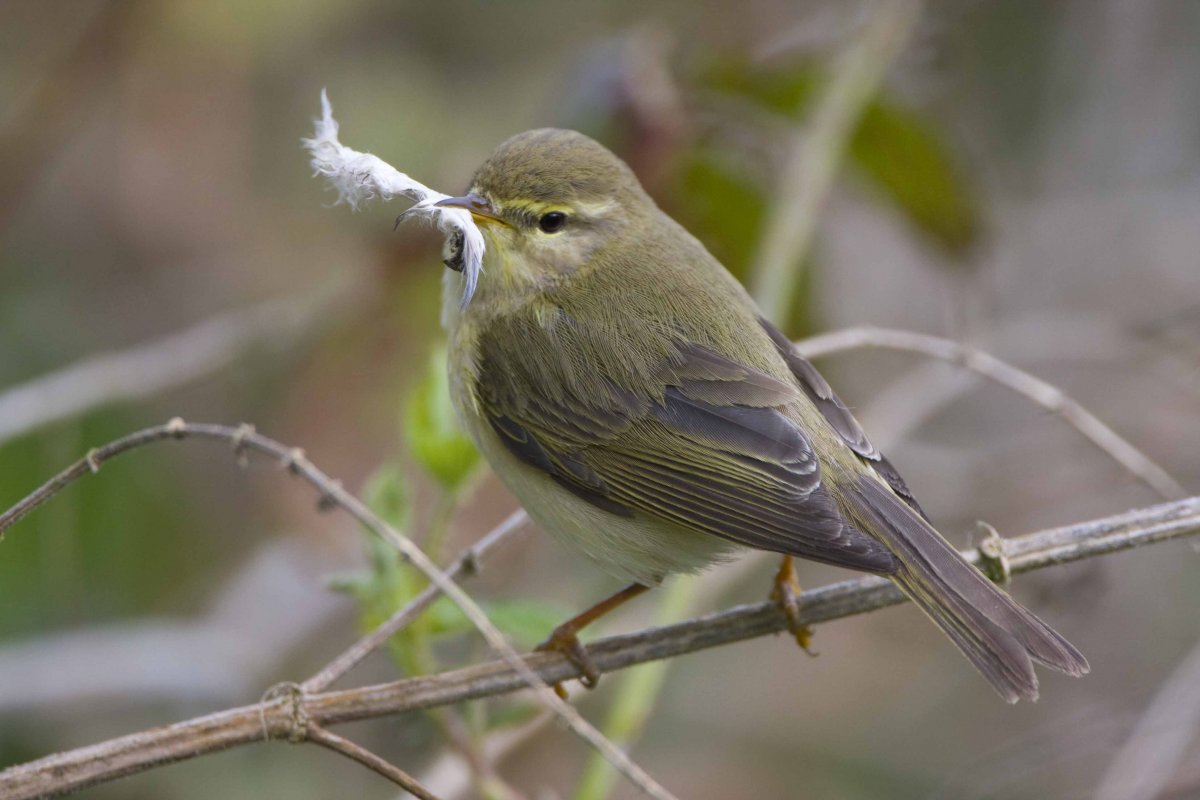
Causes and consequences of spatial variation in sex ratios in declining bird species
Author: Morrison, C.A., Robinson, R.A, Clark, J.A. & Gill, J.A.
Published: 2016
New BTO research shows a recent imbalance in Willow Warbler sex ratios, with 60% of adult birds being male. Such a skewed ratio has implications for the conservation of this migrant species.
08.07.16
Papers
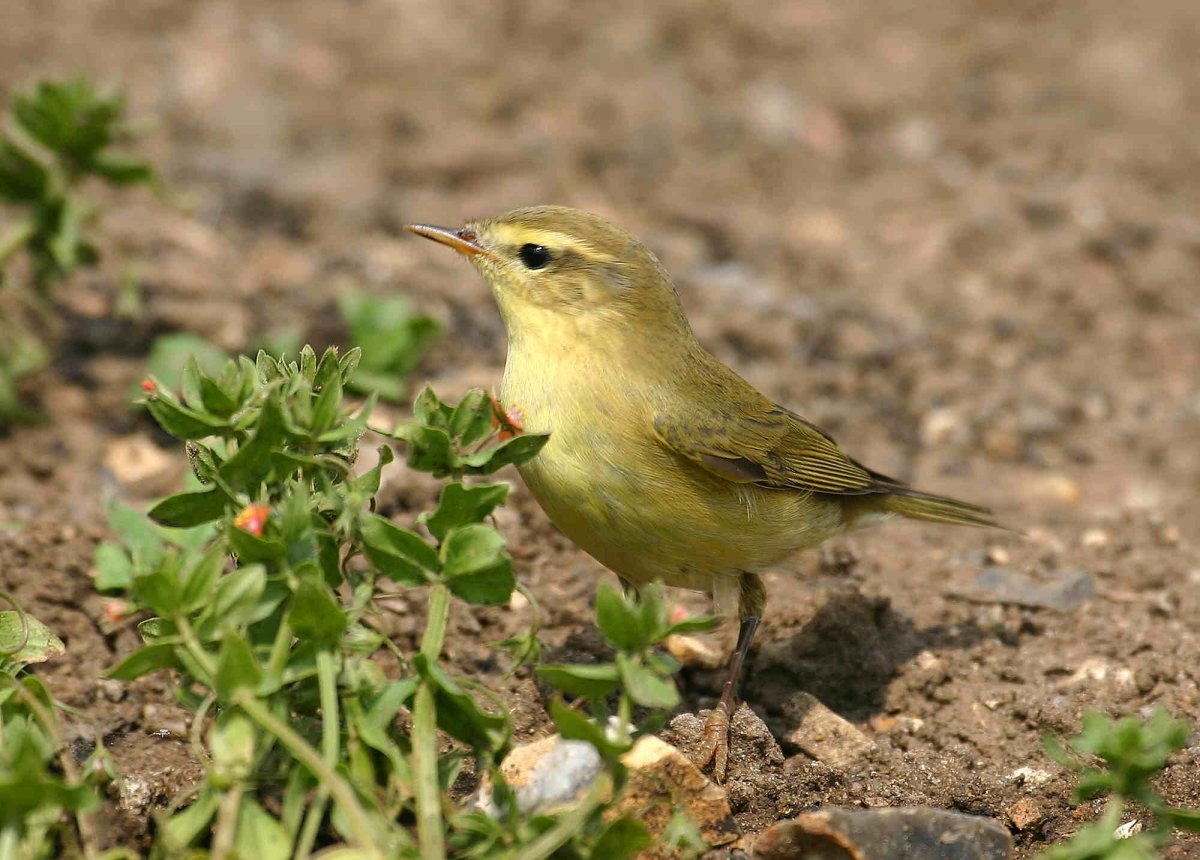
Using stable isotopes to link breeding population trends to winter ecology in Willow Warblers Phylloscopus trochilus
Author: Morrison, C.A., Robinson, R.A., Clark, J.A., Marca, A.D., Newton, J & Gill, J.A.
Published: 2013
Populations of many of the UK-breeding birds that migrate to Africa for the winter are falling rapidly. These trends could be linked to conditions experienced during breeding, over winter, or on migration. Since the early 1990s, the abundance of Willow Warblers, one of Europe’s most numerous long distance migrants, has fallen sharply in the south and east of England, but decreases are less marked or absent in the north and west of England and Scotland. Could these contrasting population trends be explained by differences in the conditions birds are experiencing outside of the UK?
01.01.13
Papers Bird Study
